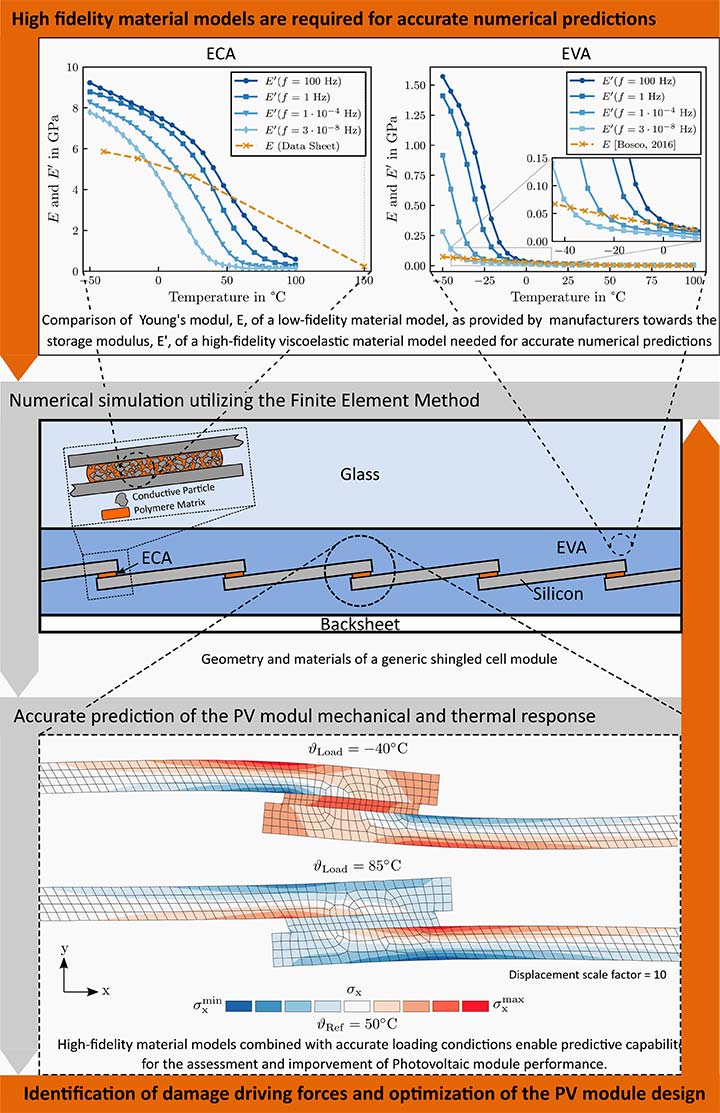Advancing Bifacial Solar Module Reliability and Manufacturability with New Module Materials and Lightweight Transparent Back Lamination
DuraMAT will demonstrate an industrially relevant bifacial solar module with advanced materials reliability characterization and new concepts in low-cost along with a lightweight transparent protective back-lamination technology to accelerate state-of-the-art module performance, reliability, and manufacturability.
We will execute the project in two main thrusts. Thrust 1 will thoroughly investigate the main degradation mechanisms in bifacial modules, which will employ both SmartWire and the more traditional busbar technologies, using our advanced module materials and interface reliability characterization and modeling capabilities. Thrust 2 will develop, characterize, and validate a highly transparent protective back-lamination technology with markedly improved adhesion and moisture protection as a back-glass replacement.
Core Objective
Location
Stanford University
Applications
Polyolefin-based encapsulants are increasingly taking a larger proportion of the market
share, and it is critical to understand the degradation mechanisms associated with
this encapsulant and its interfaces with a backsheet, the solar cell, and the glass
as a result of exposure to terrestrial stressors such as UV radiation and elevated
temperatures. Understanding these limitations will enable the development of more
robust and longer lifetime bifacial modules and models that more accurately predict
potential degradation expected through field deployment.
Innovative plasma processing is a scalable method to produce barrier films on thermally
sensitive polymer substrates in open-air, which provide modules with robust protection
against moisture ingress.
Availability
Available to DuraMAT community and external collaborators.
References
Zhao, O., Ding, Y., Pan, Z., Rolston, N., Zhang, J., & Dauskardt, R. H. (2020). Open-Air Plasma-Deposited Multilayer Thin Film Moisture Barriers. ACS Applied Materials & Interfaces, May. https://doi.org/10.1021/acsami.0c01493
Contact
To learn more about this project, contact Reinhold Dauskardt.

Schematic on left shows full encapsulation structure including novel light-weight transparent back lamination. Bottom right is a cross section SEM image of the multilayer plasma-deposited thin film barrier, which prevents moisture from the environment from reaching the cell. Graph on top right shows the decrease in water vapor transmission rate (WVTR) of the plasma-deposited barrier as the number of layers in the barrier is increased. A multilayer structure with increasing number of layers allows for more protection of the bifacial cell.